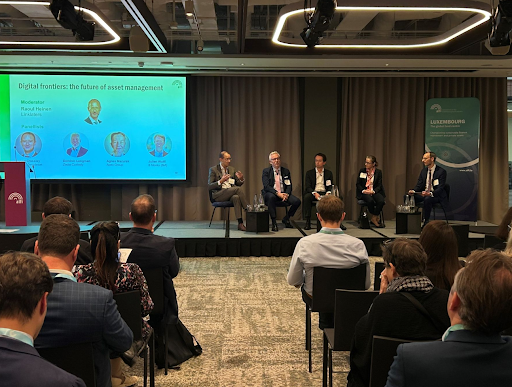
“Automation must not strip the soul out of asset management: artificial intelligence should support compliance, not replace human expertise,” said Luke Varley, general counsel at Park Square Capital LLP, during last week’s Alfi conference Synergies for Asset Management in London. His remark captures the key challenge the industry faces today: preserving the human value of investment management while business models are under growing pressure.
The central theme of Alfi’s London conference was clear: finding synergies to remain competitive. In an environment of rising costs, shrinking margins, and intensifying competition, asset managers are striving to industrialize their operations without losing sight of their core mission. That effort includes sharing certain functions, introducing automation technologies, and rethinking the convergence between active and passive management.
The rise of actively managed ETFs illustrates this trend. These hybrid products, combining the structure of an ETF with discretionary management, are expanding rapidly in Europe. According to PWC’s report ETFs 2029: The Path to USD 30 Trillion, published in March 2025, 60 percent of market participants expect global ETF assets to reach at least 26 trillion dollar by 2029, while nearly one-third foresee surpassing 30 trillion dollar. The study further predicts that actively managed ETFs could account for three trillion dollar in assets under management by 2029, up from about one trillion dollar in 2024. For Europe, annual growth of 15.5 percent is projected, bringing total ETF assets to more than four trillion dollar by the end of the decade.
The European Fund and Asset Management Association (Efama) meanwhile notes that actively managed ETFs attracted 16 billion euro in net inflows in 2024, bringing their total assets close to 49 billion euro, up from less than 10 billion euro five years earlier. This trend highlights the ongoing search for balance between flexibility, transparency, and performance, at a time when margins on traditional funds continue to erode.
Yet this growth does not come without trade-offs. “The liquidity of an ETF always depends on the liquidity of its underlying assets,” noted Pravin Bagree, head of ETF Markets at UBS Asset Management. Especially during periods of heightened volatility, liquidity remains a key concern for both managers and regulators. Another pressing issue is profitability. “Investors now need to focus on finding solutions that make their cash work harder,” said Michael John Lytle, CEO of ETF specialist Tabula Investment Management. As fee pressure intensifies, managers are looking for products that meet the growing demand for short-term returns while keeping infrastructure costs under control.
AI in the service of humans
Artificial intelligence is gradually becoming a tool to streamline processes. Its use extends beyond portfolio management into compliance, transaction monitoring, reporting, and client servicing. Several speakers at the Alfi London conference emphasized that AI is not meant to replace human capital, but to support it.
“The use of artificial intelligence must remain under supervision. You cannot manage a portfolio without accountability,” said Luke Varley. The message was clear: automation can accelerate compliance and data verification, but human oversight remains indispensable. In both control functions and portfolio management, ultimate responsibility cannot rest with an algorithm.
Luxembourg as a strategic hub
For Luxembourg’s ecosystem, this evolution represents both a challenge and an opportunity. The grand duchy, Europe’s largest center for Ucits funds, aims to strengthen its position as a technological and regulatory hub. The industrialization of asset management underscores the importance of a platform that brings together infrastructure, expertise, and supervision. Alfi is counting on these complementarities to ensure that Luxembourg retains a central role in the future of European asset management. As the industry moves toward “smart automation,” its next phase of growth will hinge on the ability to combine innovation, regulatory rigor, and human expertise.